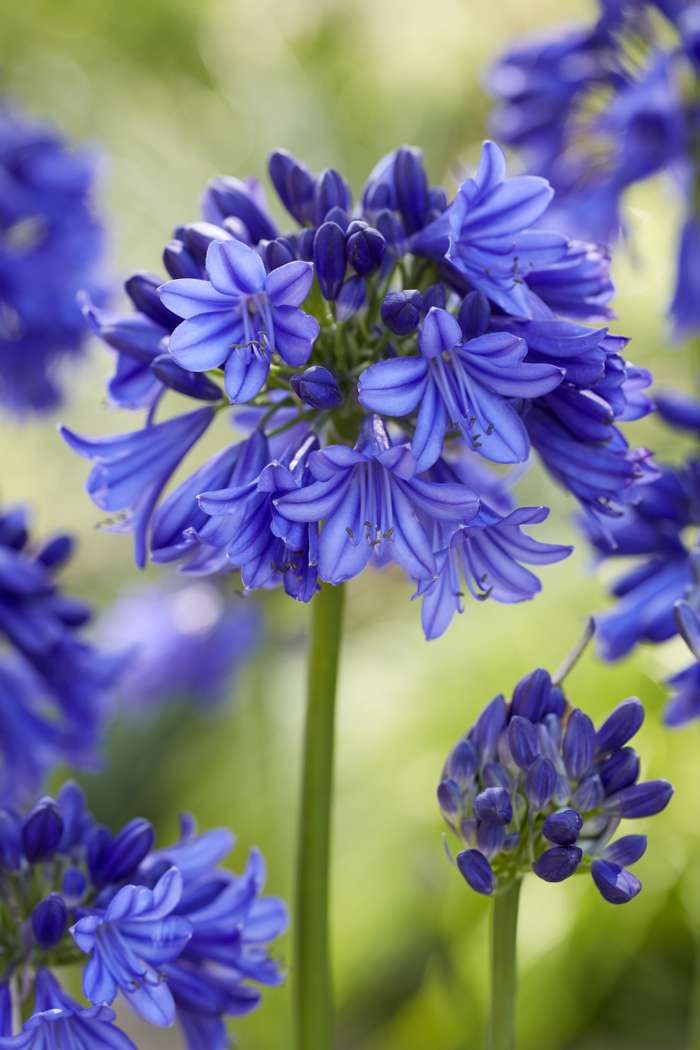Agapanthus Friend Plant Kingdoms: Perfect Pairings for Your Garden
Agapanthus Friend Plant Kingdoms: Perfect Pairings for Your Garden
Blog Article
Understanding the Art of Agapanthus Care: Important Actions for Healthy Development and Dynamic Flowers
In the world of horticulture, the farming of agapanthus stands as a rewarding endeavor for those who seek to nurture these elegant blooming plants. From picking the appropriate range to understanding pruning strategies, the journey in the direction of growing flourishing agapanthus plants is complex and holds the vital to unlocking the complete potential of these agricultural gems.

Choosing the Right Agapanthus Selection

When picking the ideal Agapanthus variety for your garden, think about aspects such as environment suitability, flower color, and growth practice. Agapanthus, generally referred to as Lily of the Nile or African lily, is available in a variety of colors varying from tones of purple and blue to white. Choose a bloom color that enhances your existing garden scheme to produce a harmonious landscape. Furthermore, consider the environment in your region to ensure the Agapanthus variety you pick can thrive in your specific conditions. Some varieties are much more tolerant of cool temperature levels, while others favor warmer environments. Recognizing the development routine of different Agapanthus varieties is important for appropriate placement within your garden. Some ranges have a clumping growth habit, perfect for containers or borders, while others have an even more spreading nature, suitable for ground cover or mass growings. By very carefully reviewing these elements, you can select the best Agapanthus range to improve the beauty of your garden.
Suitable Growing Conditions
Thinking about the optimal ecological demands is vital for successful Agapanthus farming. Agapanthus thrives in well-draining soil with a somewhat acidic to neutral pH degree. When growing, choose an area that obtains complete sunshine to partial color. In hotter environments, supplying some mid-day shade can avoid scorching of the fallen leaves. Agapanthus plants are sensitive to chilly temperature levels and should be secured from frost throughout wintertime months.
To make sure healthy and balanced development and vivid flowers, plant Agapanthus bulbs at a deepness of about 2-4 inches and space them 8-12 inches apart. Mulching around the base of the plants helps preserve dampness and subdues weed development.
Watering and Fertilizing Tips
Preserving appropriate wetness levels and providing crucial nutrients are crucial elements in the treatment program for Agapanthus plants. It is critical to strike a balance when it comes to sprinkling Agapanthus. If overwatered, these plants prefer consistently moist dirt however are vulnerable to root rot. During the growing period, water deeply when a week, ensuring the dirt is well-draining to avoid waterlogging. In hotter environments or during durations of drought, more regular watering may be necessary to maintain the soil evenly wet. Nonetheless, decrease watering in the winter season to avoid waterlogged conditions.
Fertilizing Agapanthus is necessary for promoting healthy development and prolific blooms. Use a balanced fertilizer, such as a 10-10-10 formula, in the very early springtime as brand-new development arises. By following these watering and fertilizing suggestions, you can ensure your Agapanthus plants grow and create vivid, resilient flowers.
Pruning Techniques for Agapanthus
Pruning Agapanthus plants at the proper times and with proper strategies is critical for maintaining visit their health and advertising optimum development and flowering. The excellent time to trim Agapanthus remains in late winter or very early springtime prior to new growth emerges. Beginning by eliminating any type of dead or yellowing leaves near the base of the plant. Cut them as short as possible without harming the arising shoots.
Deadheading spent blossoms can likewise redirect the plant's power right into creating more flowers instead than setting seeds. If you want to accumulate seeds for proliferation, leave some blossoms to dry and mature on the plant.
Remember to use tidy, sharp tools to make accurate cuts and decrease the threat of presenting illness. Agapanthus. Normal pruning will certainly aid maintain your Agapanthus looking neat and Click This Link healthy and balanced while ensuring an abundant display of stunning flowers
Dealing With Common Insects and Diseases
After making certain correct pruning methods for Agapanthus, it is necessary to resolve usual bugs and conditions that can impact the wellness and vitality of these plants. One common pest that influences Agapanthus is the Agapanthus gall midge.
One more common issue is fungal fallen leave area, which provides as dark sores on the leaves. To stop fungal illness, make sure good air blood circulation around the plants, avoid overhead watering, and eliminate visit site any kind of contaminated fallen leaves quickly. Furthermore, Agapanthus plants can deal with origin rot if they are planted in inadequately draining dirt. To prevent this, plant Agapanthus in well-draining soil and prevent overwatering. By being watchful and taking punctual activity against parasites and conditions, you can assist your Agapanthus plants prosper and generate vivid flowers.

Final Thought
To conclude, grasping the art of agapanthus treatment involves picking the appropriate selection, providing ideal growing conditions, correct watering and feeding, appropriate trimming strategies, and resolving common parasites and diseases. By following these important steps, you can make certain healthy development and vibrant flowers for your agapanthus plants. Remember to on a regular basis keep track of and keep your plants to advertise their overall health and long life.
To ensure healthy growth and lively blooms, plant Agapanthus bulbs at a depth of concerning 2-4 inches and room them 8-12 inches apart. By following these watering and feeding pointers, you can ensure your Agapanthus plants flourish and create lively, resilient blossoms.
One usual insect that affects Agapanthus is the Agapanthus gall midget. Furthermore, Agapanthus plants can suffer from root rot if they are grown in badly draining pipes soil. By adhering to these important actions, you can make certain healthy and balanced growth and dynamic blooms for your agapanthus plants.
Report this page